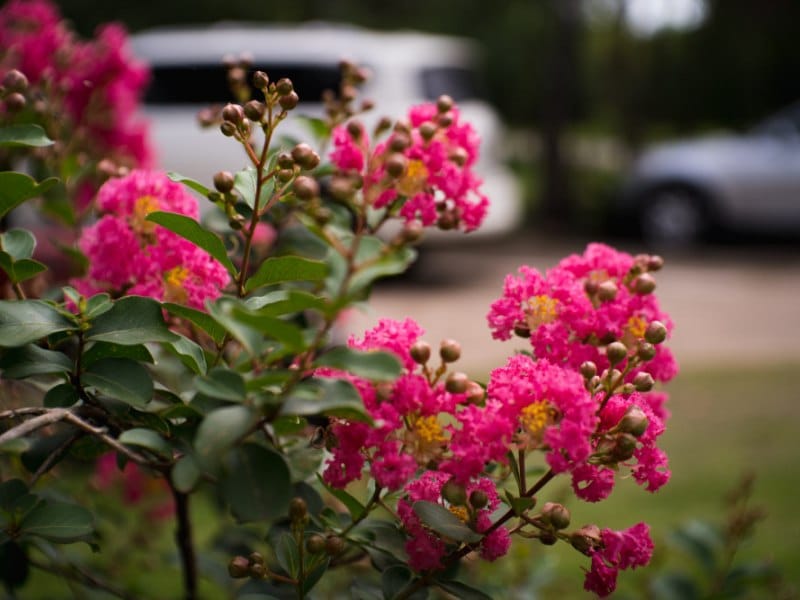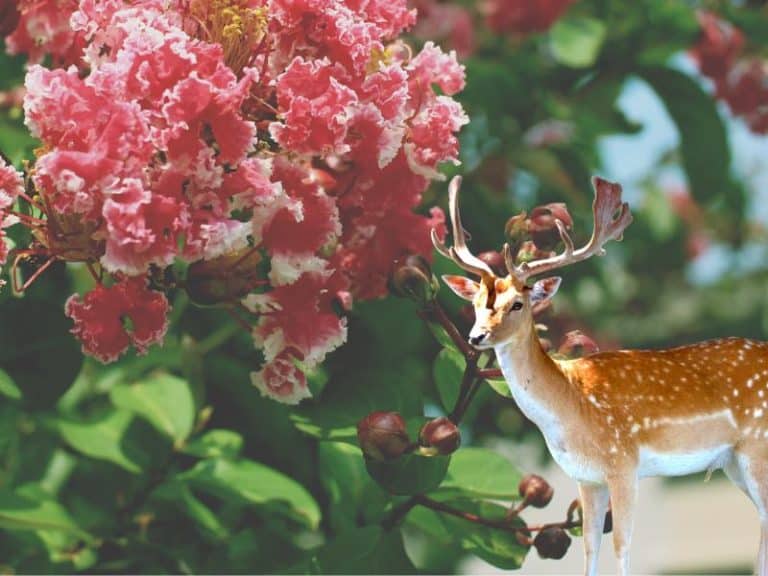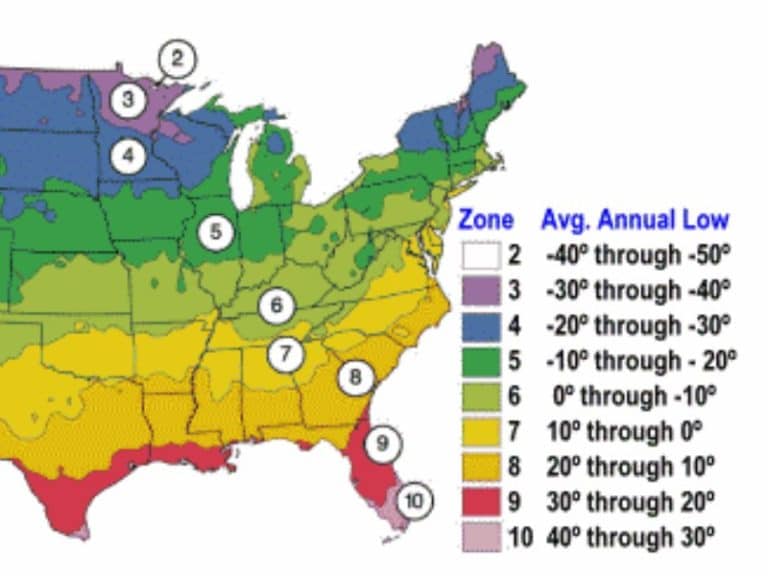Why Crape Myrtle Won’t Bloom + How to Make it Flower
Crape Myrtle trees are a great addition to home lawns and flower beds/gardens due to their colorful blooms. However, these flowering plants can sometimes produce few or no flowers at the peak of the growing season when they’re expected to blossom.
The main reason your Crape Myrtle plant will not bloom is the lack of sun exposure. Also, they will not bloom into their full brilliant pink during a drought. Expose the tree to 6 hours of sunlight and ensure it grows in sufficiently moist soils to help it bloom.
It is also likely that you’re growing trees that are not meant for your growing zone. If blooms are your major problem, I advise that you consider growing other alternative trees to crape myrtles.
Why is my crape myrtle not flowering?
If your Crape myrtle tree isn’t flowering, the main reasons are the lack of sunshine, insufficient phosphorus nutrients, excessive nitrogen nutrients, and untimely pruning.
Bud development in Crape myrtle can also be hindered by lack of enough new growth, poor soil conditions, pest, and fungal infestation, cold weather conditions, and improper planting.

Here are the reasons why crape myrtle trees are not blooming:
Insufficient sunlight
For a Crape myrtle tree to blossom, it needs 6-8 hours of direct, daily sunlight.
Lack of enough sunlight hinders the development of buds in Crape myrtle. Stunted bud development is a common problem for Crape myrtles growing under larger trees and shrubs.
Nutrient deficiency
Insufficient phosphorus nutrients in the soil may also cause failure to blossom in Crape myrtle.
Phosphorus facilitates cell division and tissue development and helps in the transfer of plant energy for root and bud development.
Untimely pruning
You need to prune at the right time of the season for Crape myrtle flowers to appear. Pruning too late removes the new wood, consequently stunting bud development.
Crape myrtle blooms from Mid-May to early June in warm climates and as late as August in cold regions.
The most suitable time of the year to prune Crape myrtle is in early spring before new growth sprouts. If you must prune after new shoots sprout for faster growth, prune only the old shoots.
Lack of new growth
Crape myrtle flowers only appear on new shoots. The tree requires optimal conditions for new shoots to sprout in the spring, including sufficient fertilizer. When the soil is nutrient deficient, there’ll be minimal new growth in the spring, consequently leading to no/few flowers in the summer.
Excessive nitrogen fertilizer
If you recently fertilized your lawn or flower bed with a nitrogen-heavy fertilizer, it could be the reason why your Crape myrtle tree isn’t flowering.
While nitrogen boosts leaf development in Crape myrtle, it hinders the development of flowers.
Drought
While mature Crape myrtle trees are drought-resilient, young Crape myrtle trees are likely to go dormant in prolonged drought conditions.
A new Crape myrtle plant that’s yet to blossom for the first time requires at least 1 inch of water every week for optimal bud development.
Expecting flowers too soon
Crape myrtle is a genus containing up to 50 different species of flowering trees and shrubs. All these varieties don’t flower at the same time of the year. Some varieties may take more time to bloom, but the flowers will ultimately appear.
Note: Some species of Crape myrtle don’t bloom as vigorously as others.
Poor soil conditions
Crape myrtle thrives in well-draining soil conditions. Therefore, planting it in soggy, poor-draining soil will likely cause stunted growth and lack of flowering.
This genus of plants also thrives and flowers vigorously in slightly acidic soil with a pH of about six. Flowering will likely fail if Crape myrtle is grown in soil with a higher or lower pH than six.
Pest infestation
Crape myrtle trees are vulnerable to various pests, resulting in stunted bud development.
Aphids, for example, cause flowering failure and can be hard to spot on taller Crape myrtles. Whiteflies are another species of insects that commonly invade Crape myrtles and stall blooming.
Fungal infection
Crape myrtle is also vulnerable to fungal infections, which slow down blooming. Common fungal diseases to watch out for on your Crape myrtles include powdery mildew and leaf spot disease.
Cold weather conditions
Crape myrtle can tolerate cold weather and will struggle to bloom in severely cold conditions. For this reason, a Crape myrtle variety that produces several blossoms in the warm south may not produce as many blooms in the colder northern regions.
Crape myrtle may have trouble blooming if you live in a warm climate region that experiences a late freeze heading into the spring.
Improper planting
When planting Crape myrtle, ensure that the root ball is at the same level as the soil surface. Planting too deep results in oxygen deficiency in the root zone area, triggering reduced bud development.
How do I get my Crape myrtle to bloom?
To get your Crape myrtle to bloom, protect it from the effects of a prolonged drought by irrigating, reducing canopy shading, ensuring proper nutrient levels, pruning at the right time, and planting in the correct type of soil.
Water the tree
If your Crape myrtle trees go dormant and the buds fail to open, irrigate them to bring them back to life. The water causes the buds to open and reveal vibrant blooms.
Prune larger plants
Prune back some of the branches if you have taller trees with wide canopies blocking your Crape myrtle from direct sunlight access. Pruning allows more sunshine to reach the Crape myrtle, resulting in more prolific blossoming.
Note: Consider relocating the Crape myrtle plant to a less-shaded spot on the lawn if it’s in a part of the yard often blocked from direct sunlight.
Ensure proper nutrient levels
Adding bone meal to the soil around the Crape myrtle tree that’s not flowering fixes the phosphorus deficiency. Meanwhile, if the cause of the problem is excessive nitrogen, add mulch to the soil to suck up the nitrogen.
Sawdust and fine wood chips are great examples of organic mulch.
Prune at the right time
Pruning Crape myrtle is in early spring before new stems sprout will give you a fuller bloom.
It ensures new shoots remain unharmed and ready to develop flower buds in the summer.
Plant in the correct type of soil
Since Crape myrtle thrives in well-draining soil, it’s best to grow it in loamy soil. If your yard has clay soil, adding sand improves its drainage. Also, adding limestone increases the pH level if the soil is too acidic with a pH lower than 6.
I’d advise that you choose the right crape myrtle tree for your growing zone for success; otherwise, you may need to change the soil and even be content with no blooms at all.
Meanwhile, add elemental sulfur or sulfuric acid to lower the pH if it’s higher than 7.
Do Crape myrtles bloom in the first year?
It’s uncommon for Crape myrtle to bloom in the first year. Most of them don’t bloom for the first couple of years as they’re still getting established. Once they settle in, they start developing flower buds.
How old does a Crape myrtle have to be to bloom?
Most Crape myrtles start to bloom in the second year after being planted. Depending on the conditions, your Crape myrtle may start to produce blooms earlier or later than the second year.
What month do Crape myrtles bloom?
Crape myrtle produces flower buds from as early as spring. However, the buds don’t open up to reveal flowers until the summer months of June and July. Crape myrtle takes longer to bloom in cooler regions in the north, with flowers appearing as late as August.
Note: You can also get a second set of blooms on Crape myrtle in late summer if you prune the spent flowers before mid-July.
References
- University of California- Agriculture and Natural Resources (UCANR) Extension: Crape Myrtle with no Blooms
- ii. Bodie V. Pennisi and Jean Williams-Woodward, University of Georgia (UGA) Cooperative Extension: Crape Myrtle Culture




